How to Draw Manga: Tips for Aspiring Artists

Japan's vibrant comic art form, Manga, is known for its unique characters and expressive storytelling. If you've ever dreamed of creating your manga, don't be intimidated by the challenge. This guide will help you navigate the basics of manga creation, from designing characters to crafting compelling stories. Let's start your journey to bringing your imaginative world to life, step by step.
1. Draw & Create Your Characters
Creating memorable characters is at the heart of manga. Here’s how you can start:
A. Face & Head
Shape:
Begin to draw basic shapes—circles for the heads, with guidelines to place features.
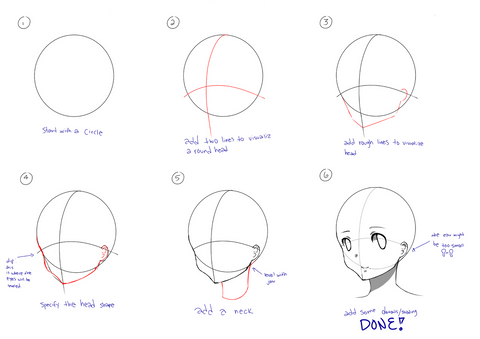
B. Eyes
Expressions:
Adjust the size and curvature of the eyes to show different emotions. Smaller, narrow eyes can indicate seriousness or anger, while large, round eyes suggest innocence or surprise.

Details:
Draw sparkle to the eyes with light reflections to bring your characters to life.
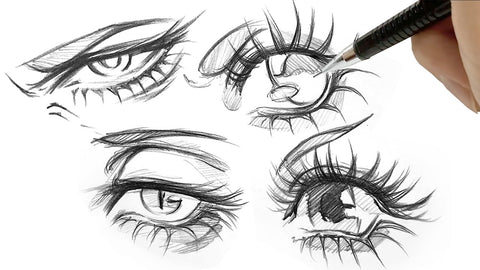
C. Hair
Style:
Hair helps define your character's personality. Spiky hair might suggest an energetic character, while long, flowing locks can imply elegance or freedom.
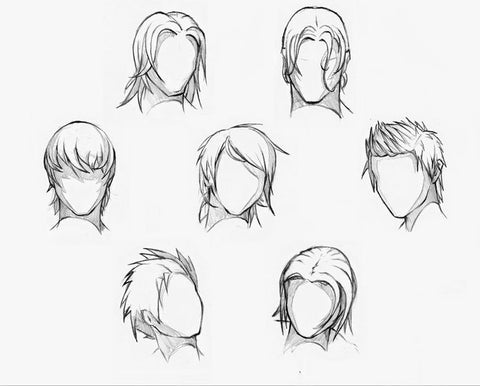
Movement:
Draw hair with movement to add dynamism to your character.
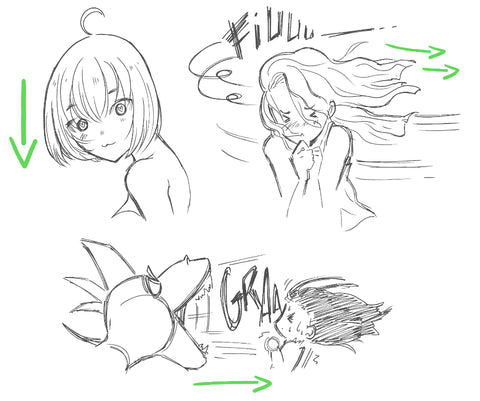
D. Outfit
Design:
Outfits reflect your character's role, era, and personality.
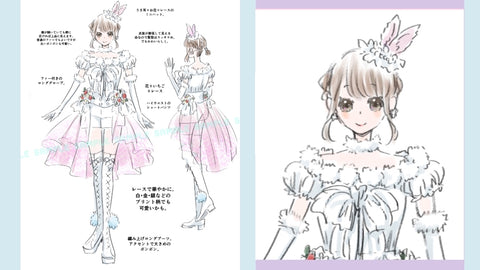
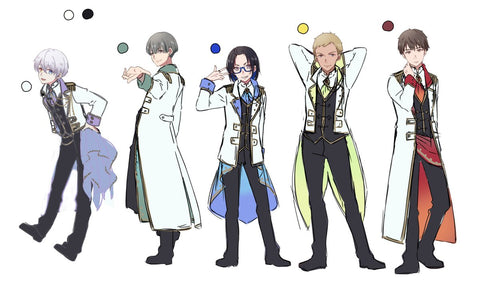
Accessories:
Don't forget accessories like hats, glasses, or jewelry to add depth and interest to your character's appearance.

E. Movements and Emotions
As you practice turning these shapes into characters, consider how motion and emotion take a 2D image and turn it into a relatable scene. Remember to incorporate these emotions through changes in facial expressions, body language, and more. Practice makes perfect!
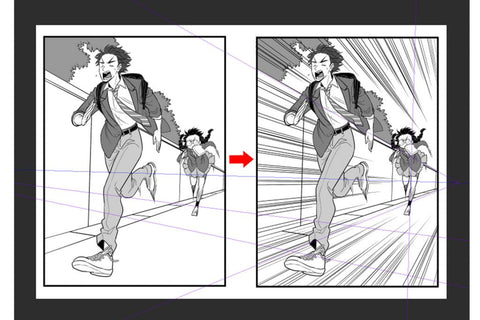
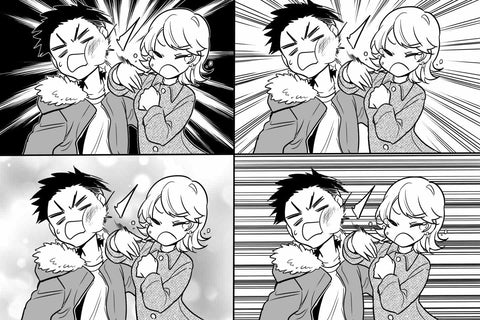

Creating characters involves mixing and matching these elements to form unique individuals. Experimentation is key—don't be afraid to try different combinations until your characters feel right. Remember, your characters are the stars of your manga; their design should be both distinctive and reflective of their personalities.
2. Creating Story & Setting
A compelling story and an immersive setting are crucial for captivating your readers. Here's how to lay the foundation:
A. Character Characteristics
Backgrounds:
Each character needs a backstory. Where do they come from? What experiences have shaped them?
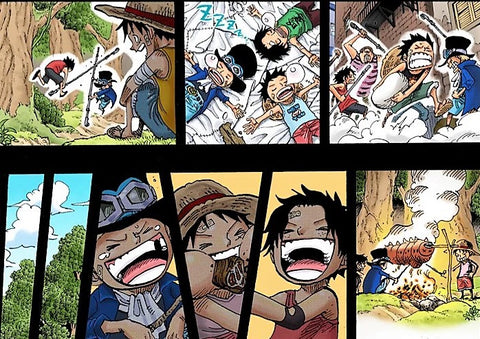
Personalities:
Define their traits. Are they brave, shy, cunning, or kind? How do these traits affect their decisions?
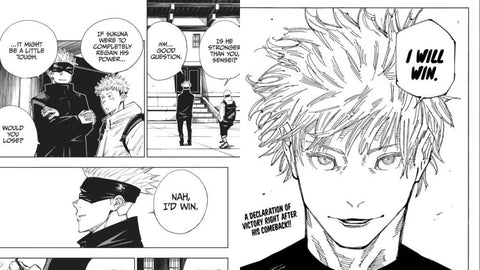
Goals and Motivations:
What drives them? Characters should have desires and fears that propel the story forward.

B. Setting
World-Building:
Is your manga set in a bustling modern city, a magical realm, or a distant planet? The setting influences the story's mood and possibilities.
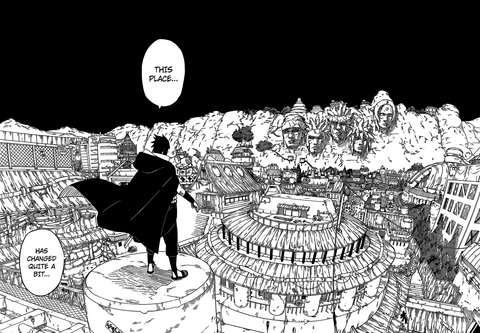
Culture and Society:
Consider the rules of your world. What customs, laws, and social norms affect your characters and their interactions?
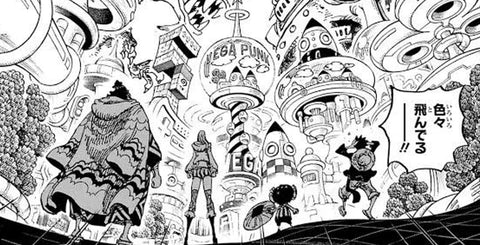
C. Story Structure
Plot:
Start with a basic structure: Introduction (set the scene and introduce characters), Conflict (introduce the problem), Climax (peak of the conflict), and Resolution (conclude and resolve the conflict).

Themes:
Decide on the message or themes you want to explore. Friendship, adventure, love, or growth can guide the direction of your story.
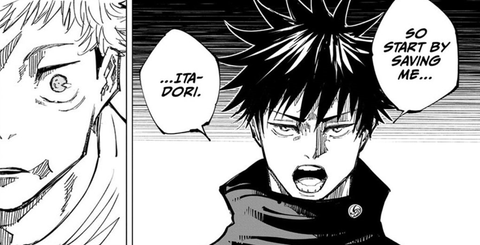
D. Combining Elements
Interactions:
Let characters and settings influence each other. A character's background might be closely tied to the setting's history or culture.
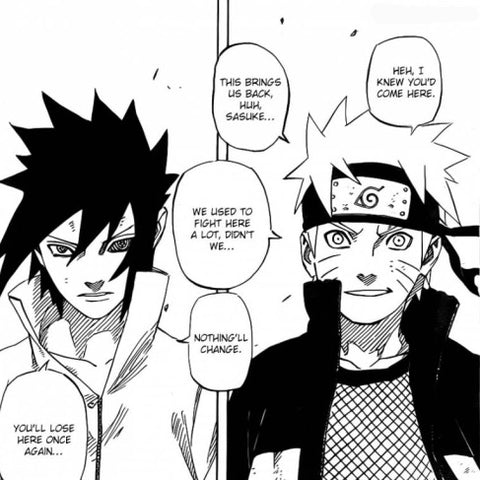
Development:
As the story progresses, ensure your characters grow or change. Their interactions with the setting and other characters should impact their journey.
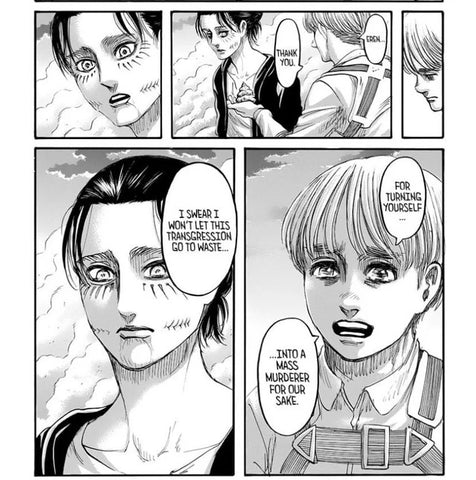
Creating a manga story involves weaving together these elements into a narrative that feels organic and engaging. Take your time to flesh out the details of your world and the inhabitants that live within it. Remember, the more thought you put into your story and setting, the more vivid and immersive your manga will be.
3. Creating Manga Panel Layout & Dialogue
Crafting the layout of manga panels is an art in itself, pivotal in guiding the reader through the story. The arrangement of panels on a page dictates the pace and flow of your narrative, emphasizing moments of action, emotion, or dialogue.
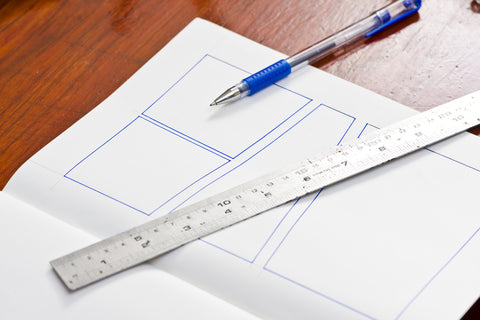
Begin by sketching rough thumbnails of your pages, considering how each panel's size and shape can reflect the story's rhythm. Larger panels can slow down the moment, allowing for detailed backgrounds or significant character expressions, while smaller panels quicken the pace, perfect for rapid action sequences or quick exchanges.

The dialogue in the manga is more than just words; it's a vital component of character and plot development. When writing dialogue, strive for natural and engaging conversations that reveal personality and advance the story. Think about how your characters speak and what their dialogue says about their relationships and individual arcs. Balancing dialogue with silence can also be powerful, using visual storytelling to convey what words cannot.
Integrating dialogue into panels requires a thoughtful approach. Ensure speech bubbles are clear and well-placed, so they're read in the intended order. Remember, the flow of text should be seamless with the artwork, enhancing the story rather than obstructing the visuals.
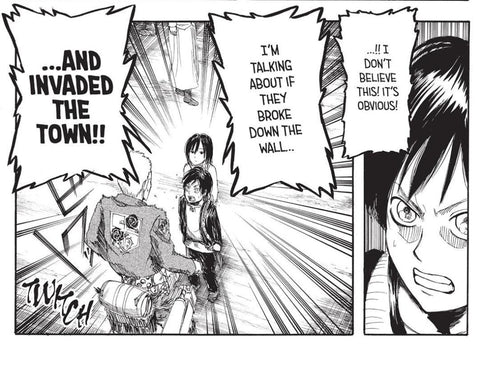
Experiment with different balloon shapes and sizes to match the tone of the dialogue, whether it's a loud exclamation or a whispered secret.
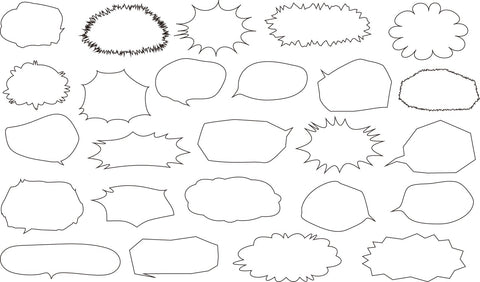
In the manga, the synergy between panel layout and dialogue creates a dynamic reading experience. It's where the visual and textual narratives meet, bringing the story to life. By mastering this balance, you invite readers into a vividly crafted world, compelling them to turn each page with anticipation.
Continue Your Manga Artist Journey
Starting your manga journey is thrilling yet challenging. Remember, every manga artist began with a single idea. This adventure is long but filled with opportunities for growth and joy.
Seek inspiration from your favorite anime, manga, and the world around you. Set small goals to improve your skills and your manga quality, like exploring different manga styles. Education is key, so consider taking classes or exploring online resources like Pinterest and Mangapedia. Engage and share with communities like Manga Raiders for feedback and support.

Your journey is unique, with each step offering a chance to learn and enjoy the process. Keep drawing, learning, and connecting with others. Embrace the adventure of bringing your stories to life!
Manga Art Showdown by Japan Crate
Now that you know how to draw cute things (and manga), you may wonder how to incorporate this new talent into daily life. If that's the case, you'll be happy to know the latest Japan Crate subscription box is manga-themed.
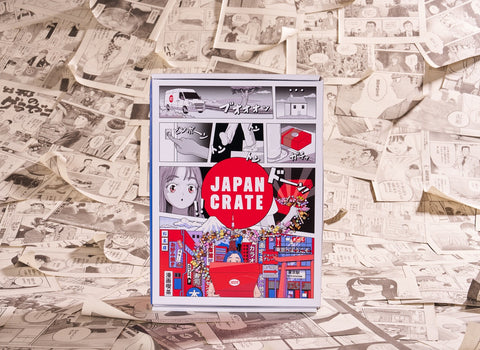
With the box, you'll have the opportunity to participate in the Manga Art Showdown against other subscribers. Whether you prefer creating cute drawings or focusing on patterns, you'll have fun practicing and competing for exciting prizes from Japan!

Along with this competition, your manga crate will include 15-17 manga-themed items, ranging from sweet to savory snacks. This box arrives in a manga-covered box, created with Japan Crate's design, allowing you to have even more manga art in your life.
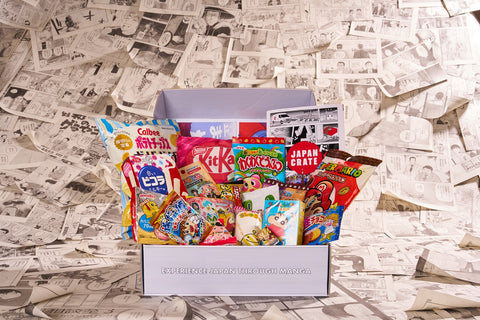
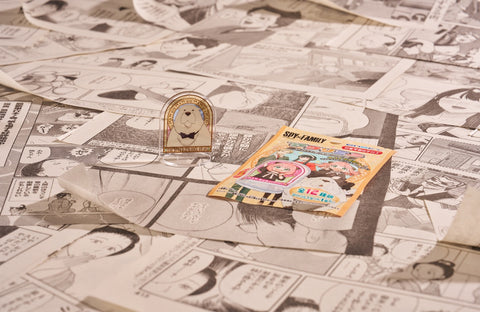
You'll even find a bonus collectible item in your box: a Spy X Family acrylic stand featuring a random character. Get all these Japanese manga-themed goodies and more by subscribing to Japan Crate now!
Author Bio



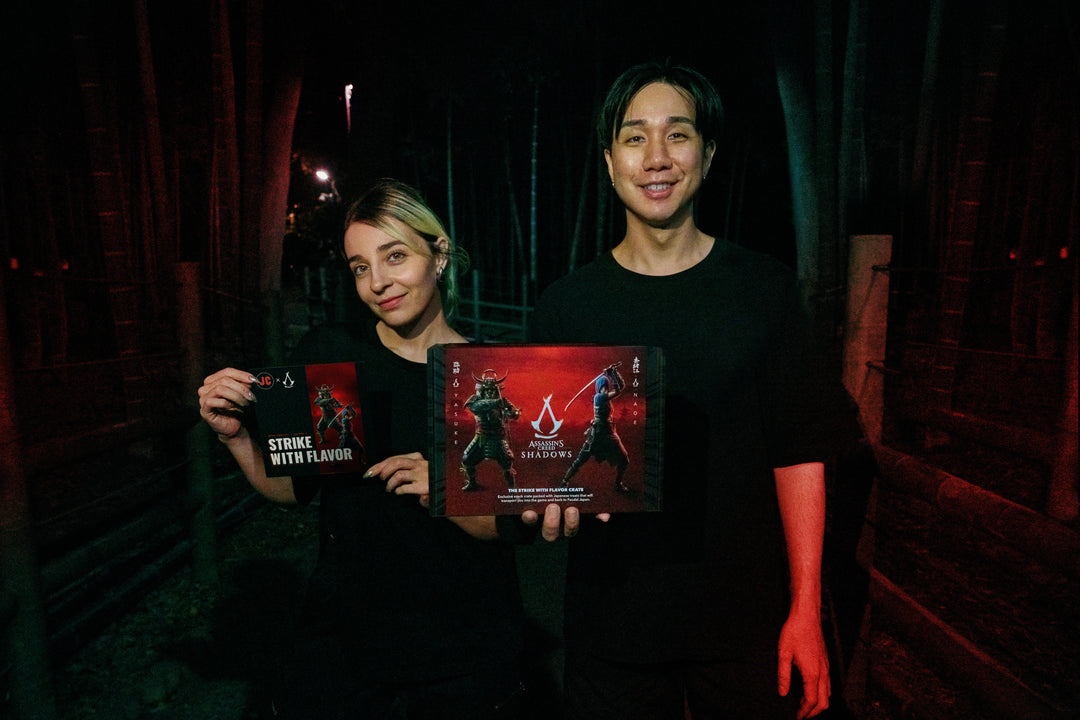
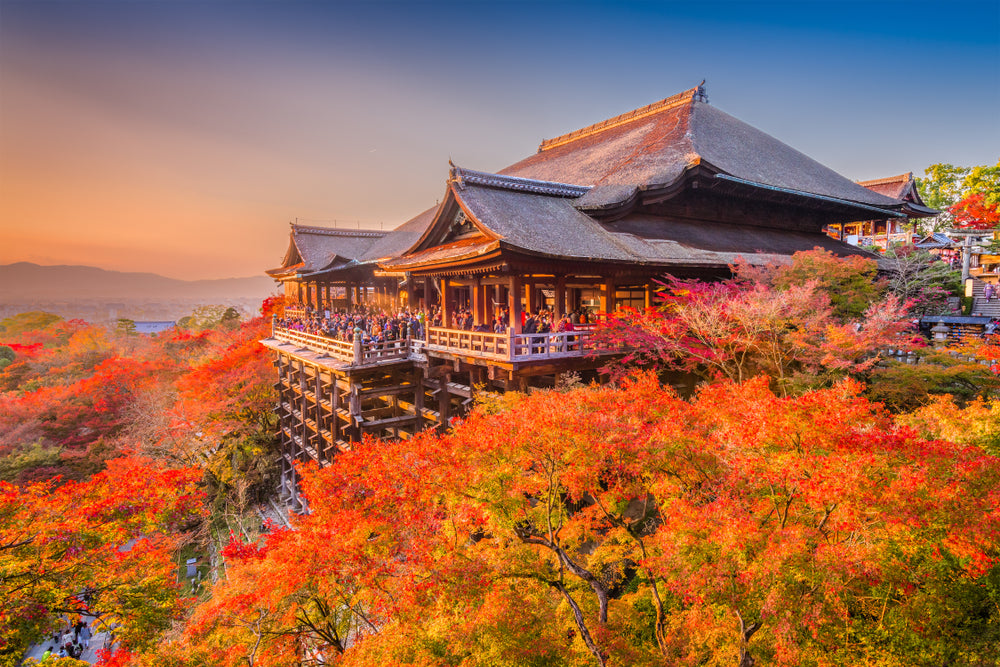
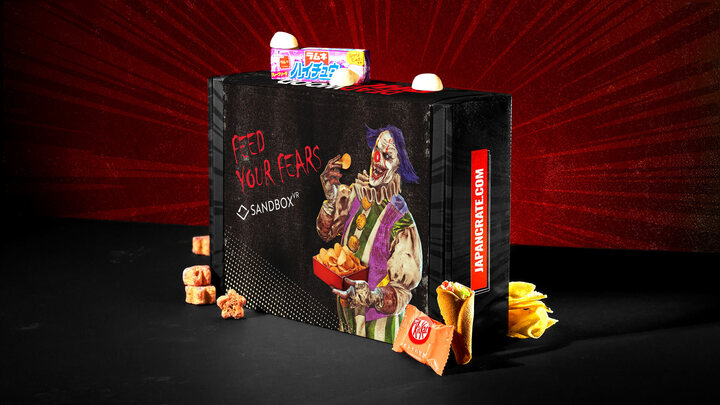
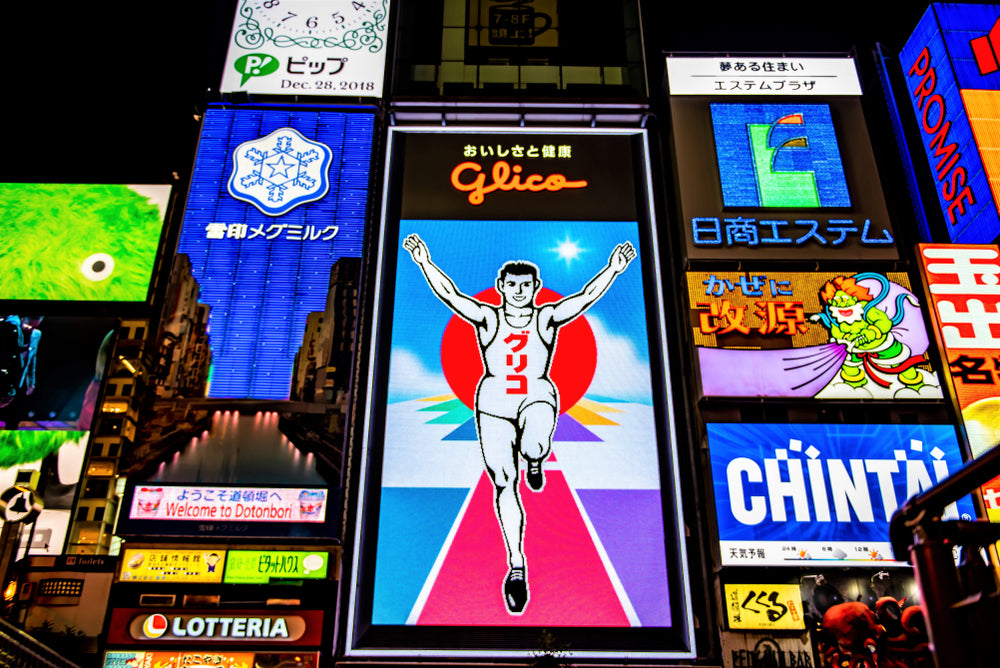
Leave a comment